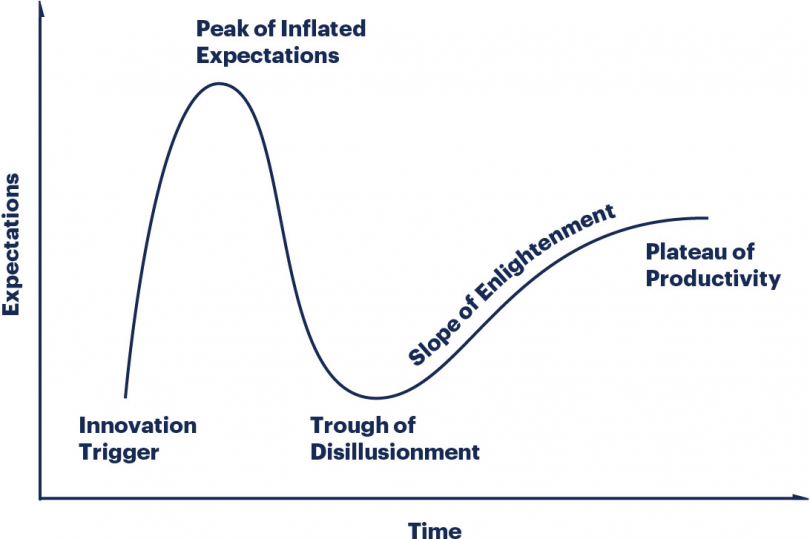September 2023
Dear Publishing Professional,
There are lessons and ideas to ponder in every media news story. Here are some highlights from recent events.
Please remember to share this with anyone you think might find it of value. You can also follow me on LinkedIn and subscribe to the letter there.
 |
This week I have a special offer from Magazzn. You can view this issue of The Krehbiel Letter on their app. Give it a try and let me know what you think. Use this link on your smart phone to get the app, or use the QR code.
Lessons from Threads
Don't go against an entrenched business with a half-done product!
Threads took off like a rocket. In its first week it got about 100 million users.
There were a lot of reasons to be optimistic about Threads.
Twitter (now X) seemed to be flailing about, and a lot of people were rooting for its demise and were looking for an alternative.
- Threads piggybacked off a huge Instagram userbase making it very easy to set up a Threads account.
- There's a lot of hatred for Elon Musk.
- A lot of people felt Twitter had become too negative, and they wanted a similar but more positive experience.
 |
After Threads' meteoric rise, things slowed down, and now it's not looking that great. Maybe it's going to follow the Gartner Hype Cycle (see image) and see a resurgence.
What happened?
There wasn't much marketing for Threads. They may have relied on buzz and the Instagram connection.
Early users were unimpressed with its features, so they stopped visiting, which becomes a downward spiral, because that kind of platform depends on people using it and believing that other people are using it.
Threads has lessons for the MVP ("minimum viable product") concept, which is a product with enough features to attract early adopters, validate the product concept, and then improve it through user feedback.
MVP is a good idea for a new product, but it doesn't seem like the right way to tackle an entrenched product, like X.
The Meta team may have thought they had a wave - with the confusion at X - so it was time to surf, even if the product wasn't up to snuff. It left a bad taste in some people's mouth.
Only time will tell, but right now it's looking like the launch was premature.
Consider text-to-speech technology
Norwegian company Schibsted has embraced text-to-speech technology using Beyond Words to convert text into audio. They serve the audio from their own site, which allows them better data insights and the use of their own authentication process. Providing the audio version has increased subscriber engagement with their content.
Email vs. the web for content delivery
Summary: La langue francaise boosted its registered users by 450% using a strategy inspired by The New York Times and Semafor involving e-newsletters and a dynamic paywall. Their experience raises the question whether email might become the dominant form of content delivery for publishers.
On Semafor, after you read a little of an article the site prompts you to sign up for the e-newsletter relevant to that article. It's easy. You enter an email address and you're done. There's no password, no "click here to verify" or any other friction.
La langue francaise followed suit and created three different registration modules with unique value propositions for each section of their site. This "email only" approach makes the first step in the registration process very easy, although, unlike Semafor, La langue francaise does require readers to confirm their email.
The next step in the journey is the dynamic paywall, where La langue francaise took their cues from the Times. The Poool-powered paywall is triggered based on how much content a reader has consumed, whether they've completed a quiz, and other factors.
The overall strategy seems to hinge on three things.
- Most people think giving up an email to read an article is a fair trade. (But do you get a good email address?)
- Apply a little pressure on the website to get people to take the next step to subscribe.
- Even if a reader never subscribes on the website, he's still getting the e-newsletter, which has some value in itself - both to the reader and to the publisher.
The next question to address is how much of the content they should deliver in the email itself. The email could have …
- A link to the article on the website.
- A summary of the article, plus a link to the website, or
- The entire article in the body of the email.
Right now, publishers usually view email as a channel to get more subscribers on the website, but I can easily imagine a future where more and more content is delivered through the e-newsletter, and the website becomes more of a conversion vehicle for the e-newsletter.
That would be an interesting model, with lots of room for experimentation. A publisher could have a free and a paid version of the email, where free subscribers get a limited number of stories as well as the headlines that the paying subscribers get.
Question: Will email continue to grow as a form of content delivery for publishers?
Four things publishers should do now about AI
- Modify your robots.txt file to exclude bots that crawl content to train AI models.
- Have your IT folk block these bots at the server level.
- Update your website T&Cs to say your content cannot be used to train AI models.
- Start training your own LLM on your content.
Print publications are becoming a luxury item
Digital is the cheap, quick, and easy way to deliver content, but a print publication can have more sensory impact than digital. The paper can be heavy and glossy. The images brighter and sharper. It can have a nice smell. It can feel substantial in your hand. You can display it on your coffee table.
Beware measurement bias. People give more value or preference to things that can be easily quantified or measured. That's similar to "numeracy bias," where people are more likely to believe something that's expressed with a number.
Some interesting studies in haptics (the science of touch) show that physical media affect readers differently - and in many cases better -- than digital media. Readers retain more information from a print publication.
Print is a different experience, and while it's very clear that most content consumption is and will be digital, some publishers are finding interesting niches for print publications.
There's a funny contradiction about print. While a print publication can be more engaging than digital, it's harder to measure that engagement. We can't count page views or time on site when somebody is sitting in their easy chair with a magazine.
Strategy: When the in-box is crowded, aim for the mail box.
AI-generated summaries increase reader time on page
Swedish daily Aftonbladet added article summaries and was surprised to find the summaries increased reader engagement. The summaries were generated via an API connected to ChatGPT but were supervised by humans. The added summaries led to more time spent on pages.
"Eternal truths" for publishers
Reader feedback: continue the Krehbiel Letter emphasis on what stays the same during a time of radical transformation. I submit this list for your consideration.
- You have to solve a problem or meet a need. How does your product or service benefit your customer?
- Everything depends on trust. If you lose your customers' trust, you have nothing.
- Efficiency matters. Your margin is your competitor's opportunity.
- Expertise matters. Somebody has to know when the AI is wrong.
- Convenience is good, but people will tolerate inconvenience for the necessary.
- You have to have your eye on the horizon and your hands in the weeds.
- An "intuitive interface" is a childish conceit. Make sure people know how to use your product.
- Quality can be a selling point, but good enough is often good enough.
- Humans are creatures of habit - on both sides of the content experience. Strive for a regular, predictable, and reliable cadence.
- Yesterday's market is gone. You need to make adjustments based on where people are today, and where you think they'll be tomorrow.
- People like stories, but don't be stupid about it. Nobody wants a story about the weather. They just want to know if they should bring an umbrella.
- Passion and authenticity are alluring, but sometimes people just want a sandwich.
- Diversify. Who knows what's going to work, and what's going to collapse? Have several oars in the water.
- Cultivate a relationship with your customer, but also between and among your customers.
- Strive for long-term value. Finding new customers all the time is tiresome work, and you don't learn as much from drive-by customers.
- Use data as much as you can, but check your conclusions against real-life feedback and experience.
- Keep a wary eye on trends. Most trends turn out to be nothing. But on the other hand, when you've got a wave, surf!
Distinguish what's changing, or able to change, and what's stable. Human nature does change, but not on a time scale that any of us will benefit from. Be a student of human nature and make sure you put those things on the "stable" side of the ledger.
Sincerely,

Greg Krehbiel
P.S. If you like podcasts, try mine. It's called "Something I Learned Yesterday." I try to keep it to about three or four minutes.
P.P.S. - Call me if you have any questions about a story in this letter, or if you need help with your business.
And now, a word about our sponsor.
Magazzn allows you to easily create and publish magazines straight to their free reader app. I've tried it myself, and it's easy to use.
Your subscribers get their issues in their pocket, and all their issues are in one place. There's no need for PDFs; no special coding or software required. It includes push notifications, and much more.
Learn more and try out the free demo!
